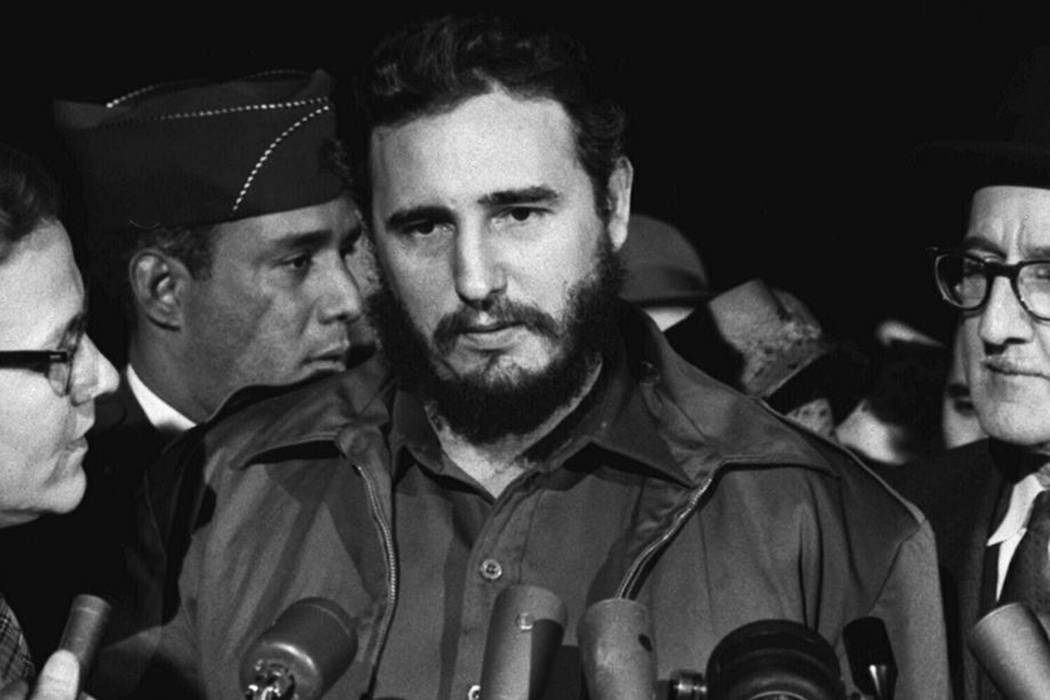Fidel Castro is dead. The Cuban revolutionary, Prime Minister, and President, who dominated his small island nation’s history for half a century, was 90.
Improbably emerging from the Cuban highlands after a successful guerilla war against the Batista dictatorship, Castro went on to survive the United States’ assassination attempts, sponsored invasion, terrorism, and decades of embargo. He survived, too, the collapse of the Soviet Union, which had been subsidizing practically the entire Cuban economy.
Castro was no democrat, but then neither were the right-wing dictators the U.S. supported in Latin America and elsewhere around the world. Castro was different, though: he really got under the U.S.’s skin, wounding American national pride and humiliating and embarrassing the great colossus to the north.
Historian Louis A. Pérez Jr. looks into the “fear and loathing of Fidel Castro” in the U.S. Anti-communism and the Cuban-American exile community went a long way in making America anti-Castro, but there was an even deeper animosity. Writes Pérez, “That Castro embraced communism was insufficient to guarantee US ire. That it happened in a country where the United States had historically imposed its will and gotten its way deepened the insult of the injury.”
Before the 1959 Cuban Revolution, Americans thought of Cuba as their property; indeed, before the Civil War, Southerners had wanted to take it for the expansion of American slavery. After Cuba’s independence from Spain in 1898, the U.S. repeatedly intervened diplomatically, economically, and militarily on the island. The U.S. military was there from 1896-1902, 1906-1909, and 1917-1922; the 45 square miles of the U.S. Navy base at Guantanamo Bay have been continuously occupied since 1903.
By the mid 20th century, Cuba was “a background for honeymoons, a playground for vacations, a brothel, a casino, a cabaret, a good liberty port—a place for flings, sprees and binges,” writes Pérez. It was not a country to be taken seriously by Americans. Castro changed all that, vanquishing the American-allied local oligarchs and expelling the American gangsters who ran the casinos and brothels. He also nationalized $1.5 billion worth of American interests in the sugar, cattle, oil refining, mining, railroads, and banking sectors on the island.
Pérez goes so far as to describe America’s loss of Cuba as a “trauma.” Shocked and perplexed Americans, perhaps not unlike parents who watch a quiet child turn on them, were blindsided by Castro’s anti-Americanism and his turn to communism and the Soviets. Soviet missiles on the island in 1962, 90 miles from the Florida, had a “devastating psychological impact on the American people” wrote Dean Rusk, JFK’s Secretary of State.
The Cuban Missile Crisis ended with the Soviets removing their missiles from the island. As part of the deal, the U.S. removed its missiles from Turkey, on the USSR’s doorstep. And the U.S. renounced the use of direct military force in Cuba. Castro got to thumb his nose at the U.S. for four more decades, a constant reminder, as Pérez says, “of the limits of US power.”
Will Castro’s death mark a new era of relations with Cuba, now that what Thomas Friedman, quoted by Pérez, called the “blind hunger for revenge against Mr. Castro,” has no more target?







